Published May 27, 2012
David R. George III - New Trek Novels, Part 1
David R. George III - New Trek Novels, Part 1
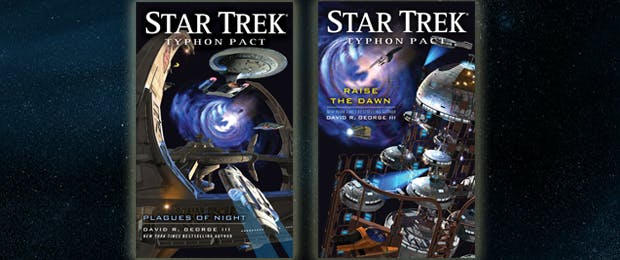
David R. George III writes prolifically for and about Star Trek. Dating back to 1999, he has penned the story for an episode of Star Trek: Voyager, more than a dozen novels or novellas, and also numerous features for the official Star Trek Magazine. George's appreciation for Star Trek, however, dates back even further, to his childhood, when he first sat, spellbound, watching a repeat of the TOS episode "The Corbomite Maneuver." George is back in action with a Trek doubleheader. Simon & Schuster will release Star Trek: Typhon Pact -- Plagues of Night on May 29, to be followed on June 26 by Star Trek: Typhon Pact -- Raise the Dawn. And so, StarTrek.com caught up with George for an extended and extensive interview spanning from that viewing of "The Corbomite Maneuver" to his earlier Trek efforts, and from the new Typhon Pact books to his upcoming projects. Below is part one of our interview, and visit StarTrek.com again tomorrow to read part two.

Let's start with some background. How did you first hook up with Star Trek and what does it mean to you, personally, to contribute to the franchise?
George: Well, as we all know, the original Star Trek television series dates back nearly half a century now. Since the show made it to syndication in the Seventies, I doubt there’s been a week -- perhaps not even a day -- when episodes didn’t air somewhere on American television. My dad had been a fan of science fiction from the time he’d been a boy, and so at some point, he latched on to the series himself. He loved it, and he wanted to share that experience with me. I can remember, back in my own childhood, him sitting me down in his high-backed easy chair so that we could watch Trek together.
Believe it or not, I still recall the very first episode I ever saw: “The Corbomite Maneuver.” Watching it made an impression on me, and two images in particular became lasting parts of my early memories. The varicolored space buoy, growing ever brighter as it neared its destruction, captivated me (especially since I thought it looked like a multihued marshmallow). As well, the eerie, long-faced simulacrum of the alien who called himself Balok fascinated my young mind.
What else do you think you took away from that initial viewing of the show?
George: I remember understanding that the alien whom the Enterprise crew encountered was not all that different from any human being -- and not simply because it turned out that Balok actually appeared quite human, and not at all like his spooky doppelgänger -- but because he lived and thought and felt in a recognizable way. I really think that helped form an empathy within me, an ability to see things from other people’s points of view.
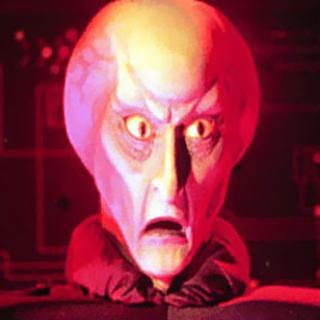
As a boy and as a teenager -- and even now -- I certainly thought Star Trek was simply cool: the starships, the aliens, the phasers and transporters and tricorders, the strange new worlds that populated the depths of space. But even back then, the show meant more to me than what essentially amounted to its trappings. Trek had something to say, with many of its installments presenting self-contained morality tales. But the series did even more than that: it held in its essence the notions of inclusiveness and diversity. At its core, those two concepts are what Star Trek means to me.
I grew up in New York City, in a heterogeneous environment. It never occurred to me to like or dislike somebody because of their race or gender or sexual orientation. Trek and its scions concretized that philosophy. Among the members of Kirk’s bridge crew aboard Enterprise, viewers could see a black woman, an Asian man, a hybrid alien, and even a Russian, a significant inclusion considering that the show had been produced in America around the height of the Cold War. Picard’s Enterprise included a Klingon -- whose empire had once been an enemy of the Federation -- a female chief of security, a female chief medical officer, a disabled African-American chief engineer, another alien hybrid, and even an android. Deep Space Nine, Voyager and Enterprise introduced even more variety among its casts and characters, further cementing the ideas that societies benefit from diversity, and that everybody deserves a seat at the table.
All of that meant something to me as a youngster, and it means even more to me now. I believe that civilization should embrace and celebrate differences, that it should cull strength from what makes us distinct. The universe is a vast, majestic place, and whether or not humanity is alone, we should strive to nurture its residents, and to promote peace and understanding over violence and hatred. Nothing is more important than love in its many forms.
I am humbled to have been fortunate enough to have contributed to the mythos of Star Trek. I love adding my own stories to those that have come before, on television, on the silver screen, and in the literary world. Writing for the franchise counts as a privilege, as well as a responsibility I take seriously. I am very grateful for the opportunities I’ve been granted.
Which of your books to date have you been most satisfied with, and why?
George: That’s a difficult question to answer. The truth is that I am seldom fully satisfied with my work, either at the time I write it or afterward if I have need to reread it. At the same time, I do take great joy in spinning Star Trek tales, in putting words in the mouths of characters I have for so long loved. I do feel as though I’ve been true to the series, to the mature, kind, thoughtful heart that has made it a beacon for so many.
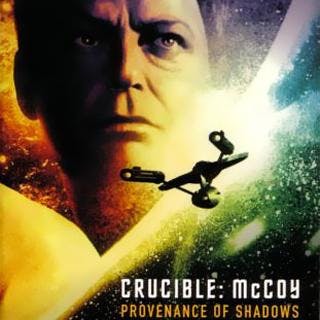
If held at the emitter end of a phaser to choose just one of my works to hand to a reader, I suppose I’d probably choose Provenance of Shadows. I wrote that novel as part of the Crucible trilogy, a set of three books I was asked to pen to help celebrate the fortieth anniversary of Star Trek. Several details about Provenance please me. For one thing, I believe that I found a new corner of the Trek universe to explore, one that had been hiding in plain sight. For another, I feel that I discovered an aspect of one of the characters, Doctor McCoy, that made perfect sense, but that had never been studied or explained. Most important, though, I think that Provenance functions very well as what I would paradoxically call a mainstream Trek novel. While the story relies on events and information from the television series and feature films, it also spends much of its length on Earth, during the first half of the Twentieth Century, without aliens or spaceships or other of the accoutrements of Star Trek. In other words, I think it works not just as Trek, but as a dramatic novel.
That said, I must admit that I felt fundamentally satisfied with my two most recent books, a pair of novels that will shortly be published under the Star Trek: Typhon Pact banner. I got to revisit series and characters I particularly enjoy, most notably Deep Space Nine and Ben Sisko. I’m hopeful that readers will find the two novels to their liking.
Someone has yet to read the Typhon Pact books. Why, to your thinking, should that person devote his or her time to the TP books?
George: First of all, the conceit of the Pact is a grand one, uniting six alien races in the Star Trek universe in an alliance that threatens the Federation. That threat comes not just in the guise of military might, but also in social, economic, and other forms. In other words, it provides a wealth of conflict for our heroes, and conflict drives drama.
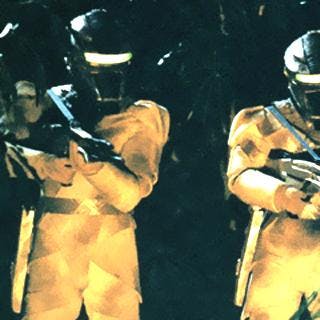
Among the signatories to the Typhon Pact are the Romulans, the Breen, the Gorn, the Tholians, the Tzenkethi, and the Kinshaya. The original four Pact novels explored several of these species in depth, in some cases developing a great deal of new information about them. David Mack’s Zero Sum Game unmasks the Breen, who viewers saw a lot of at the end of the Deep Space Nine television series, but about whom very little was revealed. Michael A. Martin’s Seize the Fire delved into the culture of the Gorn, and Paths of Disharmony allowed Dayton Ward to return to the Tholian Assembly. My own Rough Beasts of Empire plunged into the complex world of Romulan politics, while also giving readers the first-ever glimpses of the Tzenkethi. So one good reason for readers to pick up the Typhon Pact novels is that the stories explore strange new worlds.
In that way, the Pact novels really represent so much of what makes Trek what it is, but they do so in another way, too. Though hardly an exact analogy, one can easily see a degree of equivalency between the modern world’s clash of the North American Treaty Organization and the Warsaw Pact, and the clash of the Khitomer Accords alliance and the Typhon Pact. Such a setup allows the writers to explore the political and societal issues of today in a futuristic setting, in the best traditions of science fiction in general, and of Star Trek in particular.
Finally, in recommending the Typhon Pact books to readers, I’d point out that some fine writers are contributing to the series. In addition to Mack, Martin and Ward, Una McCormack will be adding her own voice when her TP novel, Brinkmanship, comes out in September.
Someone else is a huge fan of the Typhon Pact books. What's been the trick to tying together so many familiar/legendary Trek elements -- everything from the Borg to the Gorn, and the Federation to the Klingon Empire -- in a way that's at once logical, entertaining, consistent and original?
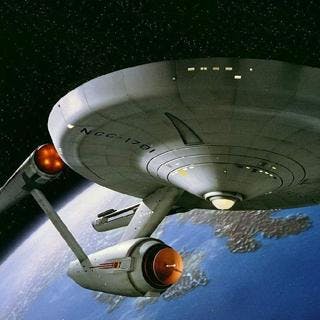
In order to maintain consistency, I think that the editors and writers must concentrate on allowing the various species to be who we already know them to be. The Romulans are complicated schemers. The Breen are secretive and mysterious. The Tzenkethi are belligerent and loathe the Federation. Those established facts shouldn’t change. That’s not to say that something new can’t be said about the different powers of the Typhon Pact, just that such developments need to take into account all that’s come before.
Fortunately, some originality is part of the DNA of the Typhon Pact concept, since such a far-reaching and multifaceted alliance has never been done before in the Star Trek universe. I’d say that the closest would be the trilateral coalition of the Dominion, the Cardassian Union, and the Breen Confederacy during the television run of Deep Space Nine. The Typhon Pact, though, with its half-dozen governments, provides an even more textured backdrop for stories to be told. Additionally, some of the races within the Pact had previously been underexplored, in the case of the Breen and the Gorn, or virtually unknown, as with the Tzenkethi and the Kinshaya. That allows the writers a tremendous amount of freedom and creativity in developing those cultures.
And as for delivering entertainment value, well, that’s a writer’s job in the first place. No matter the players, no matter the setting, no matter the story and themes, writers have to engage readers. Fortunately, the idea of the Typhon Pact is sufficiently broad to allow all sorts of different tales to be told.
Visit StarTrek.com tomorrow to read part two of our interview with David R. George III. Click HERE to check out his Facebook page and click HERE to pre-order Star Trek: Typhon Pact -- Plagues of Night.

